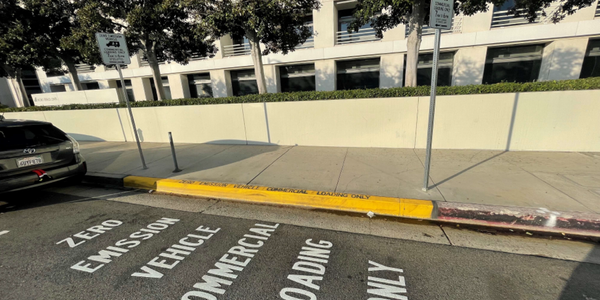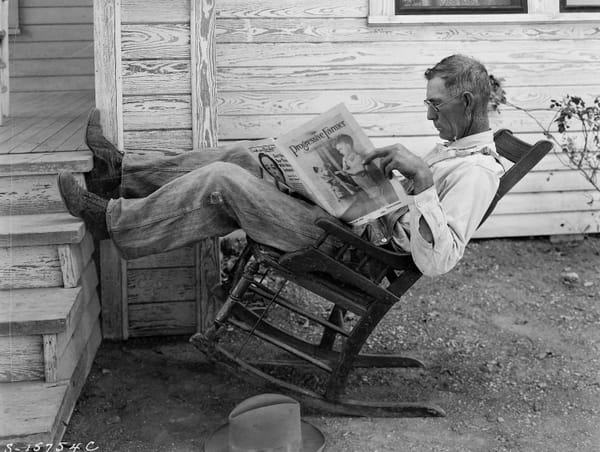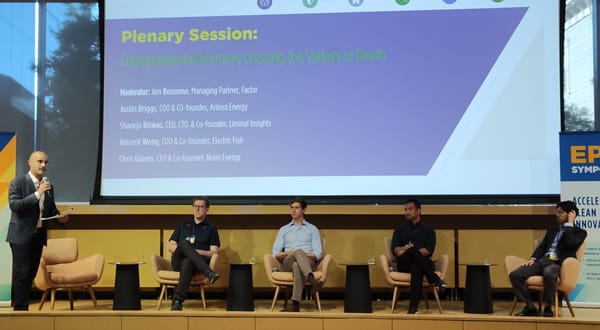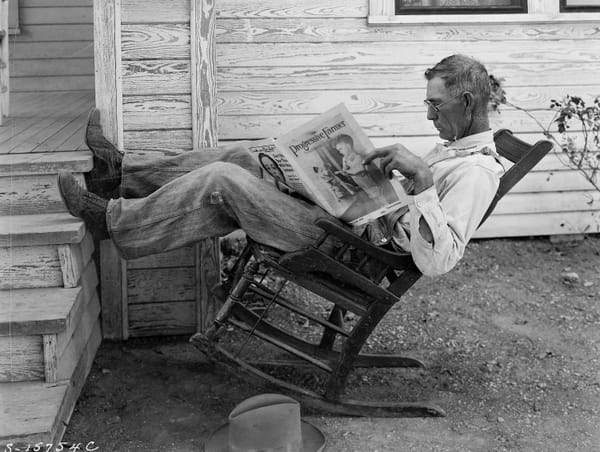Here’s how California plans to start pruning its fossil gas network
In a conversation with Quitting Carbon, the Building Decarbonization Coalition’s Beckie Menten gives an update on the rollout of SB 1221, landmark legislation that authorizes 30 neighborhood decarbonization pilots across California.
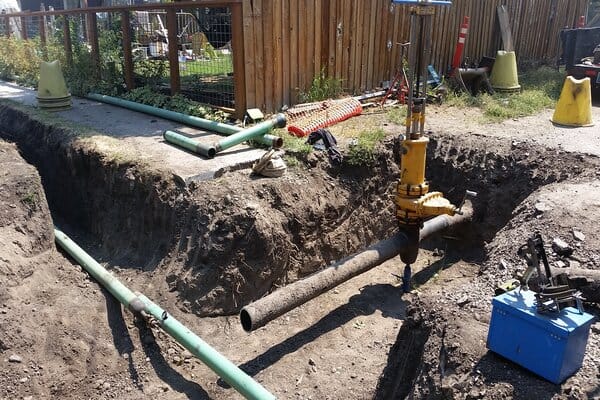
Quitting Carbon is a 100% subscriber-funded publication. To support my work, please consider becoming a paid subscriber or making a one-time donation.
California is a global climate leader but there are chinks in the state’s green armor. One is the state’s dependence on fossil gas for heating and for cooking.
Three-quarters of California’s homes receive utility gas service, and 70% of households use fossil gas for cooking – the highest such share in the nation. Residential and commercial buildings account for one-quarter of California’s greenhouse gas emissions, with fossil fuel combustion in buildings alone responsible for 10% of the state’s emissions.
To deliver gas to millions of homes and businesses in California, gas utilities operate more than 100,000 miles of transmission and distribution pipelines across the state. But maintaining that vast network of pipelines is expensive – $3 million per mile on average in California, according to the Building Decarbonization Coalition, a non-profit advocacy group focused on eliminating fossil fuels from buildings.
Policymakers know California cannot meet its long-term climate targets unless the state's fossil gas dependency is broken. But if customers leave the gas system on a one-off, ad hoc basis by, for example, retrofitting their homes to run only on electric appliances like heat pumps, the customers who remain on the system will have to pick up a larger share of the cost of maintaining the sprawling gas distribution network.
This reality prompted then-state Senator Dave Min (D) to introduce legislation last year that aims to begin the process of pruning branches from the gas network. Signed by Governor Gavin Newsom (D) in September 2024, SB 1221 authorizes California’s gas utilities to launch up to 30 voluntary pilot projects – so-called "neighborhood decarbonization zones" – and retire aging gas pipeline sections over the next five years.
I spoke with Beckie Menten, the Building Decarbonization Coalition’s California director, to check in on the implementation of SB 1221 and to discuss the challenges ahead.
“The gas transition is going to be a major issue that the CPUC has to really grapple with,” she says.
This conversation has been edited for length and clarity.
For those unfamiliar with the concept of “neighborhood electrification” or “neighborhood decarbonization,” can you describe what those terms mean and why it could be an important climate solution?
The terms neighborhood-scale "building decarbonization" and "zonal decarbonization" are frequently used interchangeably. In essence, those describe a strategy for transitioning entire communities to decarbonize energy sources and electric appliances at a time. The end goal here is to manage the transition away from the gas system, so we can shift from our fossil fuel infrastructure in a managed and thoughtful way.
What it does is basically allows utilities, instead of investing in the repair or replacement of natural gas infrastructure, to redirect that funding towards cost-effective community-scale home and building upgrades. These upgrades are great, not only for their climate benefits. In many cases, we're seeing that they can lower costs, and they have clean air benefits as well.
One of the aspects of a managed transition, and part of the reason we're really interested in this model, is it also allows you to prioritize where you target these investments, and make sure that frontline communities are first in line. That's important because as we see customers transitioning ad hoc, those tend to be customers who have access to more capital and sources of financing. That can cause challenges in the cost of managing the gas system.
As you have fewer and fewer customers on that gas system, the customers remaining have a higher cost for maintaining that overall system. So, doing a managed transition like this, where you can both shrink the gas system overall, and cost effectively redirect investment, allows you to make sure those frontline communities, frequently characterized by lower income populations, disadvantaged communities that have high exposure to air pollution, can be the first to receive some of these benefits and help protect them against the future rate spikes that could occur as the gas system sees fewer and fewer customers.
What are the goals of SB 1221?
The framework allows both the California Public Utilities Commission (CPUC) and utilities to pilot this concept. One of the critical aspects of SB 1221 that we're very excited about is that it also requires the gas IOUs [investor-owned utilities] to submit maps to the CPUC. The first maps are to be submitted by July of this year and annually thereafter.
Those maps will show across the gas distribution system where there are planned repair or replacement projects coming up. That's a tool communities can use to identify where there might be possible pilot locations, and then they can approach and work with the utility to identify and submit some of these applications.
One of the critical aspects of the program is it reforms the obligation to serve framework. Currently under California's interpretation of our obligation to serve statute, if there is a single customer in an affected project, they have the power to stop the project. If a majority of customers who are in an area are interested in receiving those free upgrades and decommissioning the gas infrastructure in their neighborhoods, they now have the power to opt into that project. If you get 67% of customers who are excited and interested in a project, then it allows the project to move forward.
Gov. Newsom included $2 million to advance SB 1221 implementation in his January budget proposal. Is that funding meant to just cover administrative costs at the CPUC?
This is a very new, untested concept. PG&E [Pacific Gas & Electric] has been doing a handful of these kinds of projects, but trying it at scale, there's going to be a lot of important lessons learned. And so, the governor's proposal does allocate staff to support a thoughtful implementation, thoughtful regulatory development, and gathering of lessons learned. We're very, very supportive of that proposal.
Thermal energy networks are gaining popularity as a neighborhood decarbonization solution in the Northeast, especially in Massachusetts. Can you describe how these networks work, and will we see them come online here in California under SB 1221?
Thermal energy networks are a little different than what a lot of people think of around the zonal decarbonization concept. Because California has such a moderate climate, a lot of times an air-source heat pump-based system is perfectly sufficient.
Thermal energy networks rely on a group of buildings that are able to share energy through thermal loops. Those loops can look a lot like natural gas pipelines, but instead of transmitting methane gas, they carry ambient temperature liquid that can interconnect with ground-source heat pumps located within each building and share a district system.
Why I think they're a really interesting concept with applicability here in California is because they have a lot of opportunity for demand management. The examples of siting them next to a co-generation or a data center are great examples. You can take waste heat from one area, leverage that energy to provide heating and cooling services for the surrounding buildings.
They can be a little more expensive to install up front because obviously they take quite a bit of effort to bore holes and set up these districting heating systems. But then the benefits both in terms of peak reduction, efficiencies of a system that's able to capture waste heat and distribute across buildings, can make that up over the lifetime of the system.
Another thing that should be particularly important to those of us in California is we're finding that thermal energy networks have the potential to save a significant amount of water. We put out a brief where we estimate that around 5 to 15 billion gallons of water are used daily in U.S. commercial spaces for cooling. Across 80 thermal energy network sites we've looked at, the annual average savings per each site were 337 million gallons – that's about 3,000 households.
Given California is always in this drought, bust cycle with water, and water resource management is a huge concern here, we think this is an attractive reason to consider working with or exploring where thermal energy network systems could be applicable here.
PG&E recently withdrew its application for what would have been the largest neighborhood electrification project in the U.S. to date at CSU Monterey Bay, partly because of the lack of a capital cost recovery mechanism. Will that stymie pilot projects under SB 1221?
SB 1221 does include a prohibition on capitalization of behind-the-meter investments. To say that a little more plainly, the utility can pay for the upgrades to the customer homes, but it has to treat those investments as expenses, instead of as capital expenses, and that restricts the utilities from being able to procure financing to cover the cost of those projects, and it also prohibits the utility from getting a rate of return on those investments.
We are optimistic SB 1221 pilots can still move forward, and there are a few reasons for that. One, the restriction is only on behind-the-meter investment, so all the other costs of the project, in theory, can still be treated as capital expenses. That'll be up to the CPUC through its regulatory framework development to weigh in on how to book the expenses the utility incurs here.
But those behind-the-meter investments should be able to be covered in large part by leveraging other available incentive programs such as the Equitable Building Decarbonization Program, which provides comprehensive direct install investments, particularly for customers in low-income neighborhoods. That should be nice synergy with a lot of the neighborhood areas we hope to target with SB 1221 pilots. It's another nice signal to bring some of those projects into these more disadvantaged communities, or communities that are lacking access to cooling and experiencing high air pollution.
This is a relatively small effort. It's 30 pilot projects, which could be 3,000 customers or it could be 30,000 depending on the size of the neighborhood in question. It’s a small enough scale of investment relative to the larger picture of operating utility budgets that if we can shrink behind-the-meter investment, then there's an opportunity.
It's not a level playing field. The utility can invest in fossil fuel infrastructure, and not only do they get a rate of return on these projects, but the ability to finance those projects means they can spread the impact to ratepayers out over the life of that asset. Versus expense treatment, it's much harder. You can't spread an expense treatment over many years of bills. That's going to limit the amount of investment utilities can do on these kinds of projects.
Without a clear mandate for the utilities to be pursuing these alternatives to fossil fuel investment, and without a profit motive for the utility to pursue these non-fossil fuel investments, it's going to be difficult to scale these projects. We either need to incentivize, level the playing field, or mandate implementation.
We will get some really valuable lessons learned from SB 1221, and the hope is that we can evolve the regulatory framework over time. These prohibitions on behind-the-meter investments specifically apply just to the SB 1221 pilots, so it does give us a chance to learn what impact that kind of cost treatment has on the appetite of the utility to pursue these projects and the overall cost-benefit analysis.
Does SB 1221 include the goal of developing neighborhood electrification projects in burn zones? If not, what can or should state and local officials do to promote electrification in neighborhoods destroyed by the recent Palisades and Eaton fires in Greater Los Angeles?
We are supportive of all-electric new construction. We find it safer, healthier, and, frankly, more climate resilient than the fossil fuel alternatives. There is a real opportunity for affected customers to leverage available codes and take advantage of the chance to rebuild a healthy, resilient home.
When it comes to the applicability of SB 1221, it hinges on the underlying gas infrastructure. There's not a lot of information currently available that explains the scope of the restoration needed to repair the gas infrastructure, and it's not clear to me the state of the underlying pipelines in these neighborhoods. Those become pretty important questions when you're thinking about a zonal decarbonization pilot as applicable to this neighborhood.
That is another benefit of the mapping requirements. Starting in July 2025, there will be tools for the customers in those affected communities to understand what the status of the gas pipeline infrastructure in their neighborhoods under the ground is, and if it's a good candidate.
One reason it's really important to focus on those sections of pipeline where there is a need for repair or replacement, is it's critical to the zonal decarbonization model to be able to capture avoided gas investment. If the pipeline has plenty of years left, then what you're doing is creating a stranded asset by decommissioning a piece of pipeline that has a lot of useful life.
It's unclear to me what the timeline is, or if there are any levers to explore SoCalGas' effort to basically do restoration work in these communities. Is there a process to make sure that the customers who are affected by these tragedies are interested in rebuilding their homes as is, or are they interested in leveraging an opportunity to potentially build safe, climate-resilient, all-electric buildings instead?
If those investments are made on that gas infrastructure, that would be eligible to be part of the rate base, meaning it will go on customers’ bills.
It's worth pausing and understanding: What is it the community wants? Given the devastation of these tragedies, understanding what the community is interested in is really an important piece here.
Are SB 1221 pilots on track to launch by the 2026 deadline?
It’s January 2026 where the utilities, according to statute, are invited to file pilots. We're optimistic the CPUC has already scoped the mapping provisions and the priorities of designation into the Long-Term Gas Planning proceeding. There's already been a public workshop the CPUC hosted to gather input from stakeholders on that mapping provision, and so we are optimistic those provisions are on track.
The building decarbonization proceeding had previously scoped questions related to zonal decarbonization projects. And so, there's a chance there's already enough of a regulatory framework to move forward with developing some of those thoughts and questions.
The governor's January budget proposal will significantly help. The gas transition is going to be a major issue that the CPUC has to really grapple with.

